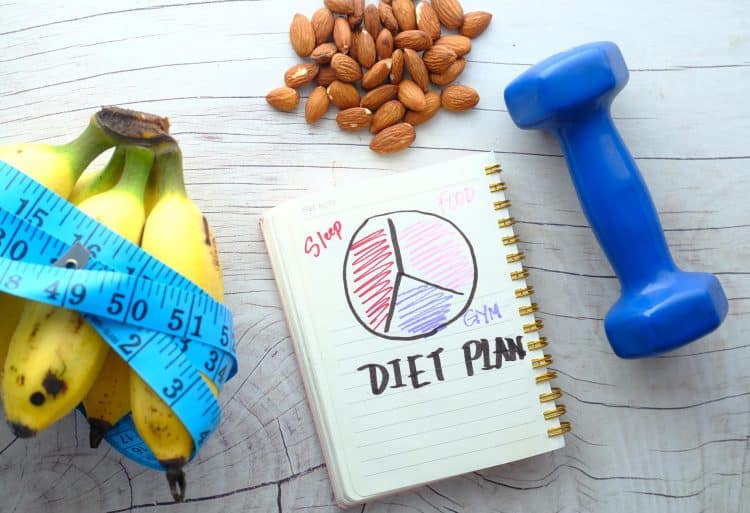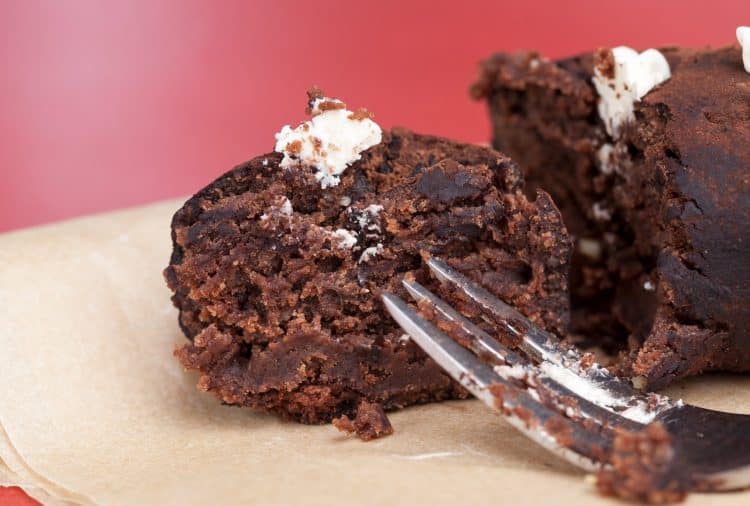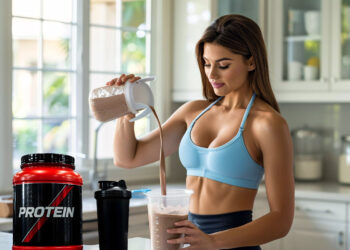The banana diet, also known as the morning banana diet, involves starting your day with 1-2 bananas and a glass of room-temperature water for breakfast. For lunch and dinner, you can eat normally but are encouraged to avoid late-night snacking and dining after 8 p.m.
The banana diet originated in Japan in 2008. It was created by an Osaka-based pharmacist — Sumiko Watanabe, for her husband — Hitoshi Watanabe, who lost 37 pounds with this diet. He later created a book on the subject, which sold over 7 million copies in 2008. (1)
Interestingly, bananas are known for their high carb content and are among the most sugar-rich fruits. This raises doubts about the efficacy of a banana-based diet for shedding pounds. Yet, its popularity in America stems from the tangible weight loss benefits reported by those who’ve tried it.
As a doctor, I have spent over 50 hours researching this fad diet. I’ll share my experiences and everything you need to know about the banana diet through this article.
How to Follow the Banana Diet for Weight Loss?

A banana diet is simpler, less restrictive, and more flexible than many other diets. Let me share something upfront: this diet does not limit you to salads and herbal juices, which can keep you hungry and distraught.
Level Up Your Fitness: Join our 💪 strong community in Fitness Volt Newsletter. Get daily inspiration, expert-backed workouts, nutrition tips, the latest in strength sports, and the support you need to reach your goals. Subscribe for free!
Here are the primary rules of this diet:
- Eat only bananas for breakfast, followed by lukewarm water or unsweetened tea, within 15-30 minutes.
- Post breakfast, you can eat anything during lunch and dinner.
- This diet plan also recommends improving your lifestyle. That involves an early dinner and having a proper sleep.
- Considering you have a regular 9-5 work routine, you should not delay your dinner beyond 8 p.m.
- Sleep for at least seven to eight hours, and drink at least a gallon of water daily. (2)
- Drink more water to reduce your calorie intake from meals during the day.
- Eat until you are 80% full.
- Exercise every day.
Benefits of Eating Bananas
Unripe bananas have resistant starch or carbohydrates that do not break easily in the small intestine. Instead, it passes through the large intestine and ferments, giving rise to good bacteria in the gut. Another benefit is consuming them does not raise your blood sugar levels and still keeps you full for a long time. However, you should not consume an entirely unripe banana. Choose a fresh banana with a bright yellow skin. (3)
Eating bananas is associated with many benefits. Consuming them, particularly after exercise, improves metabolic recovery and reduces cell inflammation. Bananas also improve cardiovascular health and protect against atherosclerosis, a condition where the arteries thicken due to plaque buildup. (4)(5)
The potassium content in bananas regulates blood pressure by reducing the effect of sodium. It also facilitates adequate cell function and better nerve response.
Bananas also contain an amino acid called Tryptophan — a compound that makes melatonin and serotonin hormones. Melatonin regulates your sleep-wake cycle, while serotonin regulates your mood.
How Many Bananas Can You Eat on the Banana Diet?
Technically, unlimited. However, most people will find eating more than 4-5 bananas challenging.
The average banana weighs 118gm, has 422mg of potassium, and 105 kcalories of energy. It is a source of protein, fiber, carbohydrates, magnesium, phosphorus, calcium, vitamin C, iron, and folate; dietary fiber, antioxidants; and phytonutrients like catechin and dopamine. (6)(7)
Now, four bananas are roughly 420 calories, which is not too much to consume in breakfast. However, you should chew them slowly to signal fullness to your brain.
The dietary recommendation of potassium in a day for adult men is 3,300 gms and 2,600 gms for adult women, which means you can eat 7.5 bananas to reach the daily maximum recommended potassium levels. (8)
However, high-potassium foods are not suitable for people with kidney problems as they cannot excrete the mineral out of their body efficiently. Such people should follow the banana diet under medical supervision. (9)
Banana Diet — Meal Plan
Here is a sample weight loss banana diet meal plan:
- Breakfast: 2-3 raw bananas
- 20 minutes later: Unsweetened tea
- Snack: Citrus fruits
- Lunch: Veggie salad with spinach, broccoli, tomatoes, peppers, or mushrooms dressed with balsamic vinegar.
- Snack: Veggie or lentil soup, ginger tea
- Dinner: Rice cake with grilled salmon, tofu or baked potato
This is just a sample diet plan; you can change it according to your needs. It’s essential to monitor your calorie intake throughout the day, especially since a significant portion is already consumed at breakfast.
Foods to Avoid on a Banana Diet
Some of the food restrictions I am about to tell you are not limited to the banana diet. You should avoid or restrict these foods whether or not you are on a weight-loss plan.
- Sugary desserts, chocolate, ice creams, and candies
- Alcohol
- Sweetened hot/cold coffee, milkshakes with added sugars, energy drinks, diet soda
- Packed fruit juices
- Butter, palm oil, coconut oil, and cheese — contain saturated and trans fats.
- Red meat, lamb chops
- Junk food — fries, hamburgers, pizza, chips
- Refined carbohydrates like white pasta and white bread
- Canned fruits like pineapple and applesauce
- Dried Fruits
Since bananas contain a high amount of calories, you should avoid high-calorie foods for lunch and dinner. Try including lean proteins such as chicken, fish, tofu, eggs, and veggie or lentil soups to avoid binge eating during the day.
You can try low-fat snacks such as popcorn, yogurt, and celery sticks with hummus between meals.
Level Up Your Fitness: Join our 💪 strong community in Fitness Volt Newsletter. Get daily inspiration, expert-backed workouts, nutrition tips, the latest in strength sports, and the support you need to reach your goals. Subscribe for free!
Some experts also encourage avoiding milk or other dairy products on a banana diet.
Choose whole grains rather than processed grains. For example, you can opt for brown rice instead of white rice, rolled oats, packed quick oats, or whole wheat bread over white bread.
Learn as many recipes as possible with non-starchy vegetables like tomato, spinach, broccoli, bell pepper, cauliflower, onions, and mushrooms. You can also have starchy vegetables like potatoes, sweet potatoes, corn, and carrots, but in moderate quantity.
Add low-sugar fruits like oranges, berries, apples, melon, peaches, and pears to your diet. However, limit calorie-rich fruits like pineapple, mango, and papaya.
If you can, switch to an entirely plant-based Mediterranean diet with fruits and vegetables, legumes, whole grains, herbs, avocados, and nuts. Many studies back the benefits of such a diet plan. (10)
Also, avoid dairy products and caffeine during the day. Research indicates bananas and milk can cause congestion, digestive problems, and weight gain. (11)
Does a Banana Diet Help with Weight Loss?
Bananas are rich in fiber and take time to digest, so you can go without eating for a considerable time and reduce your calorie intake.
However, poor food choices with an already high-calorie banana diet can do more harm than good. So, watching what you eat with your banana diet plan is very important. Your weight loss depends on the caloric deficit. Check here for more tips on how to feel full for longer and eat fewer calories.
You should stop eating when you feel 80% full. Limit your snacking, particularly late at night, and avoid consuming desserts after dinner. To reap weight loss benefits from this diet, the focus must be on mindful eating and controlling your portion sizes.
Notably, there are no scientific studies to back the efficacy of a banana diet for weight loss. Still, some studies indicate a correlation between a high-fiber diet and weight loss. (12)
If you plan to follow a banana diet, consult a dietician to get personalized recommendations based on your calorie requirements.
Your activity levels, lifestyle, and metabolism greatly affect how the banana diet contributes to your weight loss ambitions.
While the banana diet promotes healthy eating habits, restricting yourself to bananas for breakfast defeats the idea of a balanced diet. So, watch what you eat later in the day to meet your macro and micronutritional requirements.
How much time does it take to see the effects of a banana diet?
Weight loss depends on your calorie deficit. You must create a calorie deficit by eating less or exercising more. To lose 1 pound a week, which is a healthy way to lose weight, you must cut 3,500 calories weekly (500 daily calories).
Tips to Watch Your Weight
- Exercise to speed up the benefits of a banana diet. It could be a gym session, cycling, running, swimming, or home workouts.
- Sleep for at least seven hours. Many studies link improper sleep to weight gain. (13)
- Limit carbohydrates and fat in your diet.
- Incorporating fiber-rich vegetables and low glycemic index fruits into your diet aids in weight loss. (14)
- Aim for a diet rich in lean proteins, whole grains, and legumes.
- Have dinner by 8 p.m.
- Drink at least a gallon of water to promote better sleep and curb your appetite.
- Consume thermogenic foods, such as coffee, cinnamon, and ginger green tea, to boost your metabolism and burn calories.
FAQs
Is the banana diet for weight loss backed by research?
There is no scientific evidence to prove that a banana diet can lead to weight loss. Still, many people worldwide have tried this diet and experienced weight-loss results.
Is the banana diet right for the American lifestyle?
Though the diet originated in Japan, it became popular among Americans in the early 19th century. You can start a banana diet under your healthcare provider’s supervision.
Can I eat and drink just about anything after bananas in the morning?
Technically, yes. But you must eat in moderation. A weight loss diet should focus on portion control and restricting foods with empty calories, like colas, sugary drinks, and alcohol.
How many bananas can I eat on a banana diet?
While you could eat as many as 7.5 average-sized bananas daily to meet your recommended daily potassium intake, most people typically consume only between 2-3 bananas.
Can I have high-calorie foods on a banana diet?
Since bananas are already high in calories, you should limit high-calorie foods on this diet. Check foods for their nutritional value and consume high-calorie items in moderation.
Conclusion
The banana diet is a fad. You must avoid this diet unless you have very specific goals — and a doctor’s clearance.
Your weight loss will ultimately depend on a calorie deficit. Follow a diet plan that suits your lifestyle.
Eat in moderation, exercise regularly, and understand your body signals to know when you must change your approach.
References:
- Japan Goes Bananas For a New Diet – TIME. (2008, October 17). https://content.time.com/time/world/article/0,8599,1850454,00.html
- How much water should you drink? (2023, May 22). Harvard Health. https://www.health.harvard.edu/staying-healthy/how-much-water-should-you-drink
- https://advances.nutrition.org/article/S2161-8313(23)01322-4/fulltext
- Nieman, D. C., Gillitt, N. D., Wang, S., Esposito, D., & Ramamoorthy, S. (2018, March 22). Metabolic recovery from heavy exertion following banana compared to sugar beverage or water only ingestion: A randomized, crossover trial. PLOS ONE. https://doi.org/10.1371/journal.pone.0194843
- Bucalen, F. C. K. (2023, September 1). Antioxidant and anti-atherosclerotic potential of Banana (Musa spp): A review of biological mechanisms for prevention and protection against atherosclerosis. PubMed. https://doi.org/10.22038/ajp.2022.20616
- Kandasamy, S., Chinnababu, B., Javagal, M. R., Lingamallu, J. R., Venkateswarlu, Y., & Aradhya, S. M. (2014, May 1). Antioxidant Properties of Isolated Compounds from Banana Rhizome. Journal of Food Science. https://doi.org/10.1111/1750-3841.12414
- FoodData Central. (n.d.). https://fdc.nal.usda.gov/fdc-app.html#/food-details/173944/nutrients
- Office of Dietary Supplements – Potassium. (n.d.). https://ods.od.nih.gov/factsheets/Potassium-Consumer/
- High potassium (hyperkalemia): Causes, prevention, and treatment. (2023, October 27). American Kidney Fund. https://www.kidneyfund.org/living-kidney-disease/health-problems-caused-kidney-disease/high-potassium-hyperkalemia-causes-prevention-and-treatment#:~:text=If%20you%20have%20kidney%20disease%2C%20you%20are%20at%20risk%20for,and%20back%20into%20your%20bloodstream.
- Diolintzi, A., Panagiotakos, D. B., & Sidossis, L. S. (2019, June 3). From Mediterranean diet to Mediterranean lifestyle: a narrative review. Public Health Nutrition. https://doi.org/10.1017/s1368980019000612
- K S, Sudhakar, Bhat K S. Toxicological evaluation of banana and milk combination as incompatible diet – An experimental exploration of Samyoga viruddha concept. J Ayurveda Integr Med. 2021 Jul-Sep;12(3):427-434. doi: 10.1016/j.jaim.2021.02.005. Epub 2021 Mar 26. PMID: 33773882; PMCID: PMC8377192.
- Guérin‐Deremaux, L., Pochat, M., Reifer, C., Wils, D., Cho, S., & Miller, L. E. (2011, September 1). The soluble fiber NUTRIOSE induces a dose-dependent beneficial impact on satiety over time in humans. Nutrition Research. https://doi.org/10.1016/j.nutres.2011.09.004
- Sleep loss and weight gain. (2012, August 1). Public Health Nutrition. https://doi.org/10.1017/s1368980012001656
- Bertoia, M. L., Mukamal, K. J., Cahill, L. E., Hou, T., Ludwig, D. S., Mozaffarian, D., Willett, W. C., Hu, F. B., & Rimm, E. B. (2015, September 22). Changes in Intake of Fruits and Vegetables and Weight Change in United States Men and Women Followed for Up to 24 Years: Analysis from Three Prospective Cohort Studies. PLOS Medicine. https://doi.org/10.1371/journal.pmed.1001878











